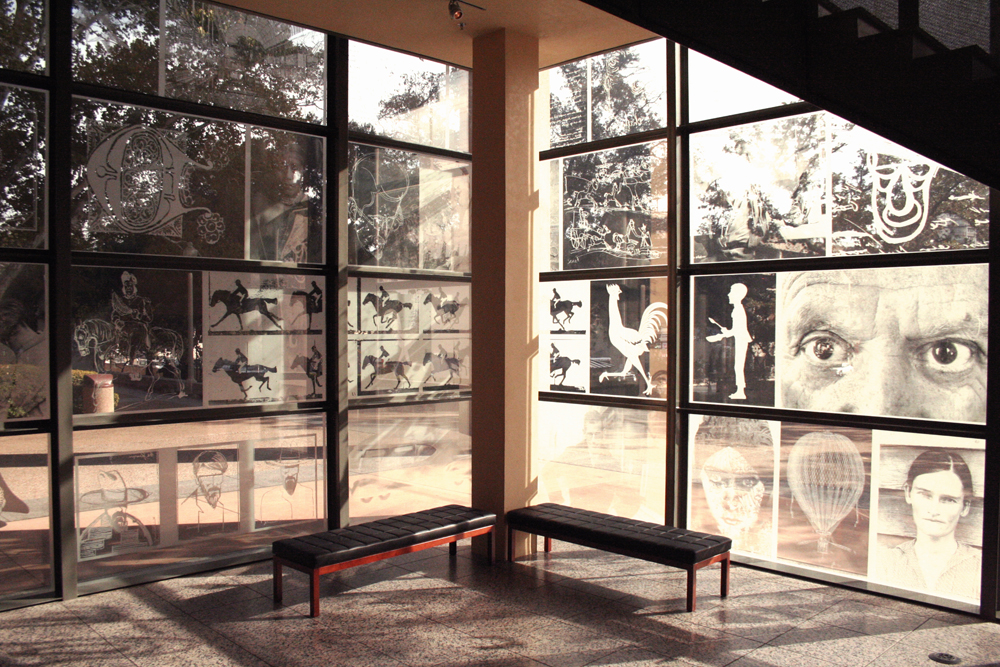
This summer I taught a rhetoric course that focused on the idea of a University. The course used Cardinal Newman's nineteenth-century treatise as a jumping off point but also looking at other ways a university might define itself as an institution. One of the more interesting discussions in class was one in which we investigated the relationship between art and the university...
The University of Texas, our home institution and object of study, has an archive (describing itself as a "world-renowned cultural institution") that not only houses important pieces of visual, textual, and performing art but also has its own galleries to put these objects on display. The building itself was recently renovated, and the atriums converted into "galleries" themselves that display the Center's significant collections on etched glass windows:

This is in addition to the University's art museum (a "cultural gateway"), which opened one of its two new buildings last year, a 124,000 square foot space that houses more than 17,000 works of art. When the museum opens its second building next year it will be the largest university museum in the country.
The space, time, manpower, and of course money (the Blanton project is estimated at $85 million) that the University has invested in art is somewhat astounding and the questions we asked in class were somewhere along the following lines:
How does collecting and displaying art further the mission of the university? What do these collections argue about the nature of the university among other institutions? Of the University of Texas among other universities? Does this accumulation at the level of high culture stand in contrast to the modern, investment-model university or can it also serve its mission?
Their answers were varied and interesting, but I won't offer them here. What I will do is give you the outline of a related assignment from the class. One obvious connection the university holds to visual art is through its use of sculpture and statue. These are everywhere on campus, offering the public an image of the University's values through its association with the figure. I gave them a map of statues around campus and asked them to explore.

Umlauf's Torchbearers outside the FAC
I told them that their task was to find and analyze one piece of public art on campus. That it should be a statue or sculpture visible to the public (not inside a building or in the art museum). Their job was to discover the argument of the piece and to consider the argument the university makes about itself by making the piece part of its public space.
Recent comments
2 years 29 weeks ago
2 years 44 weeks ago
2 years 44 weeks ago
2 years 50 weeks ago
3 years 4 weeks ago
3 years 4 weeks ago
3 years 4 weeks ago
3 years 6 weeks ago
3 years 6 weeks ago
3 years 6 weeks ago